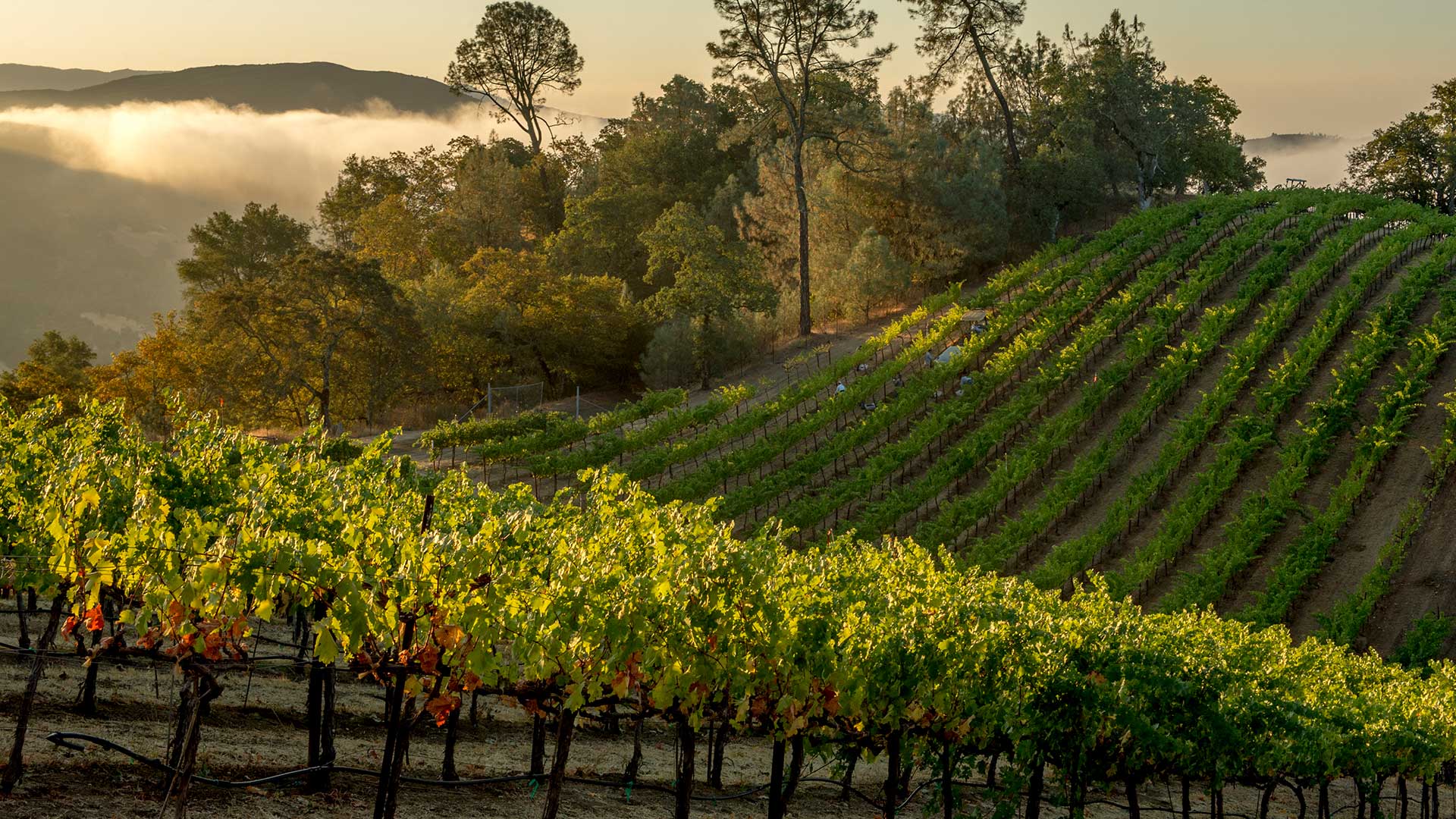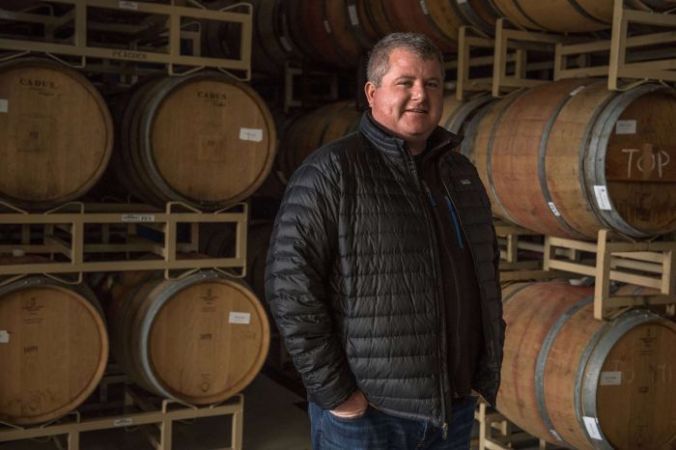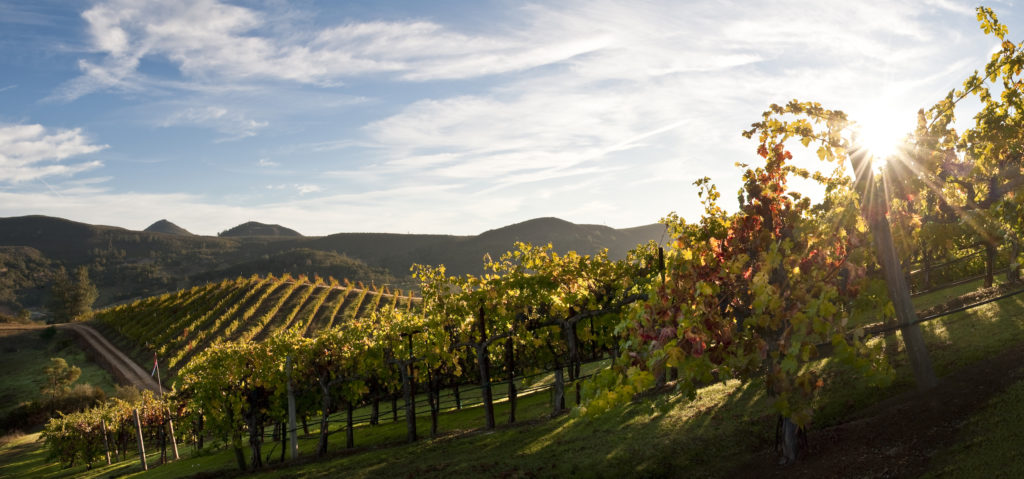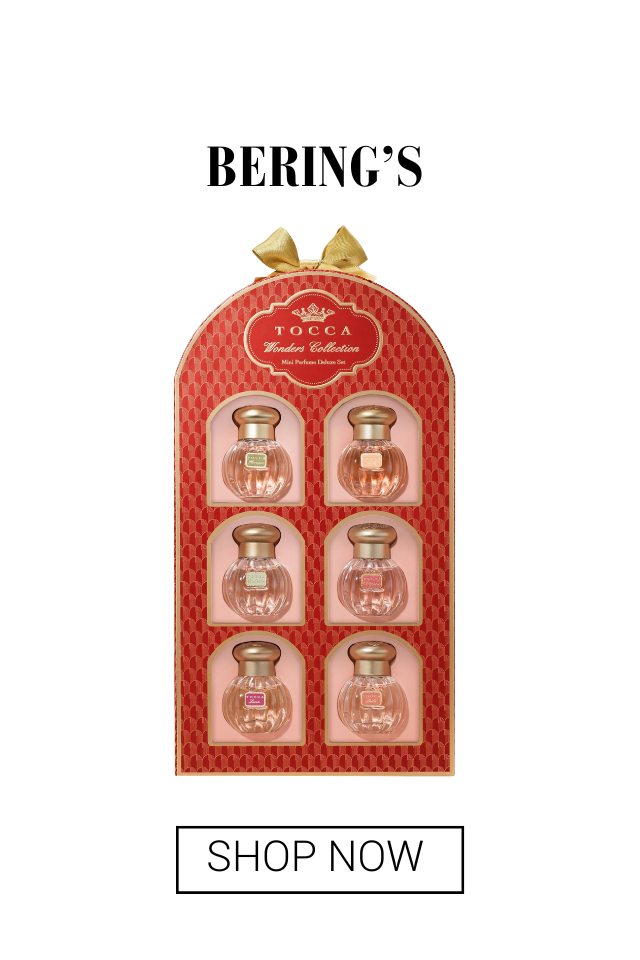What You Should be Drinking — These Somerston Cabs Bring Napa Home
Don't Sleep on Virtual Tastings
BY James Brock //
The Somerston Estate is a prime property in Napa Valley. (Courtesy Somerston Estate)
Another day, another virtual tasting. . . and I’m smiling as I write this. The long-distance gatherings have been abundant since COVID-19 turned the world upside down, and while some have been better than others — that’s the way of life, no? — almost all of the tastings I’ve participated in have been informative, engaging and fun.
That goes for the recent one with Somerston Estate, a 1,682-acre Napa Valley winery in the eastern Vaca Mountains that has 244 acres planted to vines and produces cabernet sauvignon, merlot, cabernet franc and sauvignon blanc. It was established in 2007. (For a bit of history about the estate and its other labels, read this.)
Craig Becker is Somerston’s director of winemaking and a co-founder of the estate, and he and Cody Hurd, assistant winemaker at Somerston, led the Zoom tasting of two of their wines, the 2015 XCVI and the 2016 LX. These are cabernet sauvignons that deserve your attention.
Becker and his team oversee 154 distinct vineyard blocks, and these two wines — as is the case with all of Somerston’s offerings — are sourced from a single (different) block.
Celestial Block XCVI is where the fruit for the 2015 cabernet sauvignon grew, while Celestial Block LX nurtured the grapes for the 2016 bottling. Both vineyards are hillside plots — Block LX’s (60) elevation averages 1,550 feet above sea level, and Block XCVI (96)’s elevation averages 1,100. (For those who want more specifics, Block 60 is a little less than an acre in size, and contains six rows and 969 vines — clones 15 and 337 — and Block 96 spans 2.3 acres with five rows and 4,148 vines — clone 47.)
I pulled the corks on the wines about 30 minutes before I tasted them, and the bottles had been resting for a week at 55 degrees Fahrenheit.
The XCVI was up first. A whiff of brooding dark fruit — blackcurrants, plums, — greeted me, sensually, accompanied by eucalyptus and cigar box. This wine knows how to seduce. Its boldness fills the mouth — the fruit is assertive and confident — and the finish is engagingly persistent. The tannins in this wine play wonderfully well with a pleasant acidity.
The fruit for this wine was picked by hand, then de-stemmed, sorted, and cold-soaked for five days at 50 degrees Fahrenheit. Native-yeast fermentation occurred over 16 days, and the XCVI was aged for 24 months in 70 percent new French oak and 30 percent once-used barrels. The wine was released in October 2019, and 320 cases were produced. It has a suggested retail price of $175.
Food pairings? Well, I’d never disagree to drinking this while eating a grilled steak, and a rich meatloaf would also be a fit. It is drinking well now, and I’ll wager it will be beautiful in 2029.
(Somerston with narrative-V3 from Robert Holmes on Vimeo.)
The 2016 LX was next, and Becker and team have crafted something special in this one. Block 60 is the highest vineyard at Somerston, and receives sun all day. The quality of the fruit that went into this bottle is impressive. The growing season was (mostly) steady and mild, as well, marked by warm days at the end of the growing season, another component of note here.
Fruit Fun With Somerston
Fruit forward can be an overused descriptor, but it is apt for this wine. Lively notes of dark cherry and an alluring herbaceousness — plus chocolate. Drinking this, I was taken to the Napa Valley, and glorious mountain fruit. Again, one would not be wrong to open a bottle of this now, and cellar one (or more) for a decade.
The 2017 LX was aged for 24 months 80 percent new French oak and 20 percent once-used barrels; it also carries suggested retail price of $175, and production was 87 cases. Food pairings? How about a grilled venison steak, or osso buco?

Becker’s stated goal is to make Somerston one of the world’s best estates, and his team has the talents and funding to give it a go. Sustainability is also in the mix here, something I firmly believe is crucial to the future of winemaking. Here is the future at the estate, according to Somerston itself:
The estate – with its rugged terrain, spectacular vistas, and bountiful wildlife – is the highlight at Somerston, while the winery blends into the landscape. The winery is a renovated 12,000 square-foot barn. It is a practical, efficient, and green facility with some of the most cutting-edge, innovative technology in the world. The centerpiece is an integrated, carbon-neutral CO2 heating and cooling system that operates with zero emissions of hazardous refrigerants while achieving a vastly higher performance level than traditional propane-based hot water boilers and standard refrigerant heat pumps. The system will allow the winery to produce hot water, not from propane, but electricity generated from the use of solar panels.

The next phase of the project is to construct an additional winery building with a solar roof that will make Somerston self-sufficient in energy and capable of operating entirely off the grid. The winery also employs an anaerobic process wastewater bio-filter that delivers clean, pH-adjusted water combined with irrigation water and returned to the vineyard.
Impressive plans, impressive wines.
For more wine, travel and other stories from James Brock, check out Mise en Place.












_md.jpg)







